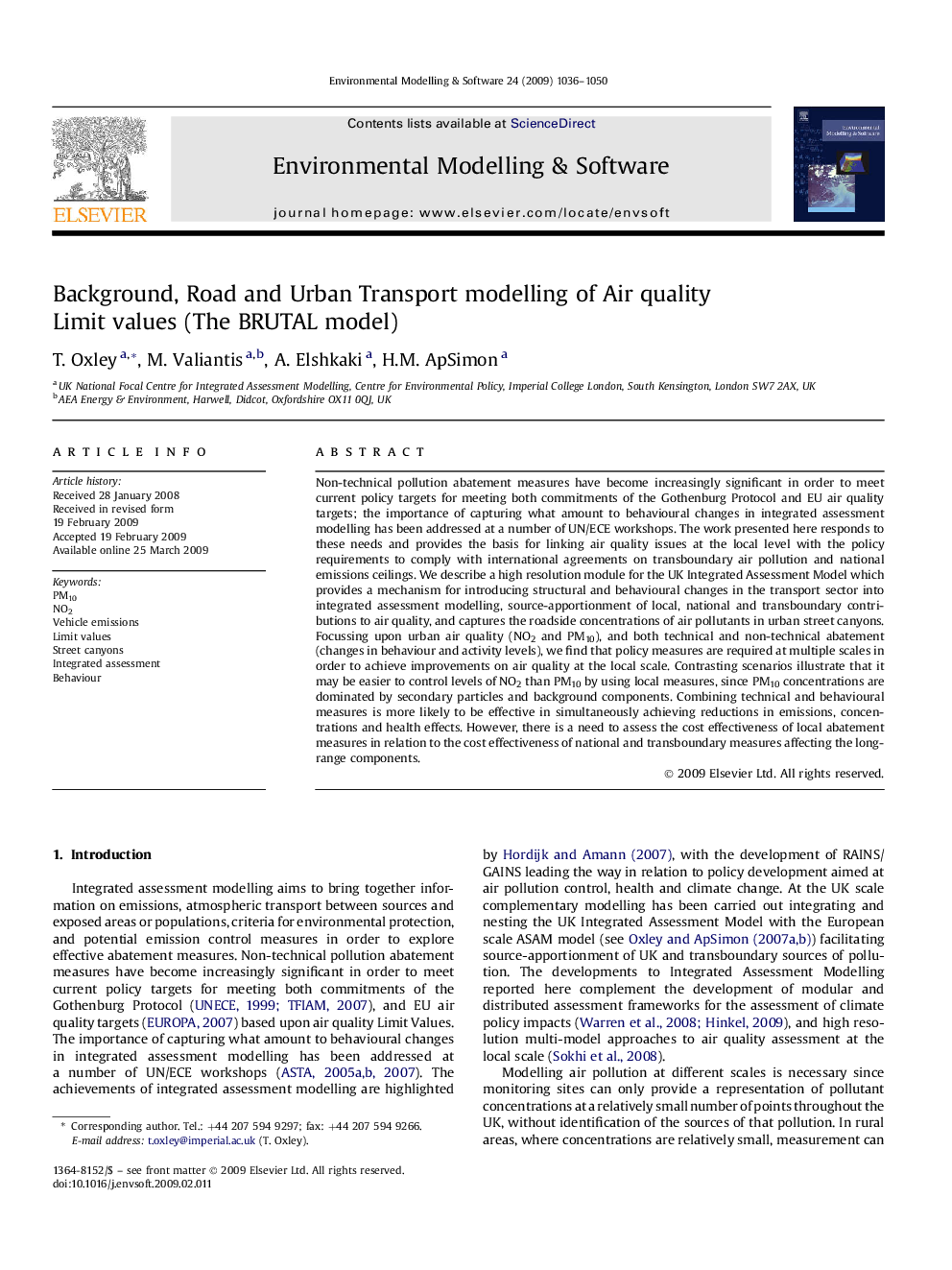| Article ID | Journal | Published Year | Pages | File Type |
|---|---|---|---|---|
| 568725 | Environmental Modelling & Software | 2009 | 15 Pages |
Non-technical pollution abatement measures have become increasingly significant in order to meet current policy targets for meeting both commitments of the Gothenburg Protocol and EU air quality targets; the importance of capturing what amount to behavioural changes in integrated assessment modelling has been addressed at a number of UN/ECE workshops. The work presented here responds to these needs and provides the basis for linking air quality issues at the local level with the policy requirements to comply with international agreements on transboundary air pollution and national emissions ceilings. We describe a high resolution module for the UK Integrated Assessment Model which provides a mechanism for introducing structural and behavioural changes in the transport sector into integrated assessment modelling, source-apportionment of local, national and transboundary contributions to air quality, and captures the roadside concentrations of air pollutants in urban street canyons. Focussing upon urban air quality (NO2 and PM10), and both technical and non-technical abatement (changes in behaviour and activity levels), we find that policy measures are required at multiple scales in order to achieve improvements on air quality at the local scale. Contrasting scenarios illustrate that it may be easier to control levels of NO2 than PM10 by using local measures, since PM10 concentrations are dominated by secondary particles and background components. Combining technical and behavioural measures is more likely to be effective in simultaneously achieving reductions in emissions, concentrations and health effects. However, there is a need to assess the cost effectiveness of local abatement measures in relation to the cost effectiveness of national and transboundary measures affecting the long-range components.
